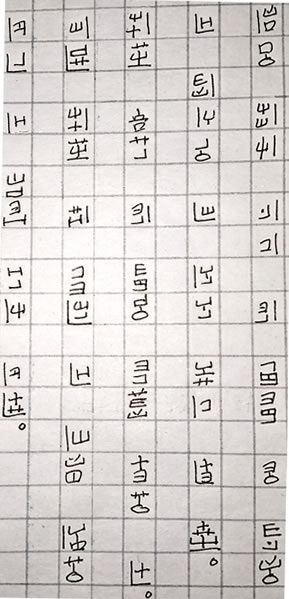Tehreek-istani is an alternative way to write Urdu devised by Willem, who has always thought that the Arabic script is not well-suited for Urdu. It is designed to represent Urdu in a compact way, and was inspired by the Korean script, and also from the Japanese and Arabic scripts.





Tamām insān āzād ôr ḥuqūq-o ʿizzat ke ėʿtibār se barābar peidā hū'e heiṅ. Inheṅ żamīr ôr ʿaql vadīʿat hū'ī he. Isli'e inheṅ ek dūsre ke sāth bhā'ī čāre kā sulūk karnā čāhi'e.
All human beings are born free and equal in dignity and rights. They are endowed with reason and conscience and should act towards one another in a spirit of brotherhood.
(Article 1 of the Universal Declaration of Human Rights)
Constructed scripts for: Ainu | Arabic | Chinese languages | Dutch | English | Hawaiian | Hungarian | Japanese | Korean | Lingala | Malay & Indonesian | Persian | Tagalog / Filipino | Russian | Sanskrit | Spanish | Taino | Turkish | Vietnamese | Welsh | Other natural languages | Colour-based scripts | Tactile scripts | Phonetic/universal scripts | Constructed scripts for constructed languages | Adaptations of existing alphabets | Fictional alphabets | Magical alphabets | A-Z index | How to submit a constructed script
[top]
You can support this site by Buying Me A Coffee, and if you like what you see on this page, you can use the buttons below to share it with people you know.

If you like this site and find it useful, you can support it by making a donation via PayPal or Patreon, or by contributing in other ways. Omniglot is how I make my living.
Note: all links on this site to Amazon.com, Amazon.co.uk
and Amazon.fr
are affiliate links. This means I earn a commission if you click on any of them and buy something. So by clicking on these links you can help to support this site.
[top]